A good background of your presentation sets the stage for the rest of the look and feel, so it’s important to choose wisely. For example, a simple design can elevate the look of your content, but too simple and it can appear unpolished. Meanwhile, a colorful background can provide the foundation for a balanced palette, but one color too many and you’ve got a chaotic mess. A strong contrast can help make a bold statement, but text can easily get lost if the contrast is too high.
The process is certainly delicate, but not impossible. It simply requires thinking a bit deeper about your choice and keeping a couple of tricks in mind. Below, we’ve put together a collection of some of our favorite backgrounds to use in Prezi presentations and a description of why they work. You can find all of the examples below within the Prezi platform.
Using lines and curves in backgrounds to structure your presentation
If you have a hidden line in a photo, you can structure your content so that it follows a particular flow. Keeping your text or topics along the line can also help prevent you from placing content over subjects within a background image (a common mistake that can make your visuals difficult to digest).
1. Iceland in presentation backgrounds

We like this photo of a lone figure in nature because the ice creates a natural direction for content and there’s plenty of room for placement.
2. Coffee mug presentation background

This coffee mug is a nice choice for presenters who don’t want to deliver their content in a specific order. Text or topics can be placed anywhere around the central image, and presenters have the option to use techniques like conversational presenting to share their message.
3. The road forward presentation picture
If your presentation is about a type of journey (whether that’s actual travel, the process of achieving something in your professional life, or something in between), this road-forward image is a great option. The metaphor can be communicated fairly quickly, and the road provides an actual line for your content.

Using negative space in presentation backgrounds
It’s easy to discount empty areas in photos, but when it comes to good backgrounds, negative space can be incredibly useful. Consider spicing up a sparse area with text, shapes, icons, logos, etc. when you want to make them pop.
If slides aren’t your cup of tea, or you’re simply in the mood to try something new, Prezi’s open canvas might be the right change of pace. Prezi users can easily design their presentation within negative spaces by placing topics or stacks of content in them, and navigate to each area as needed. Here’s an example from one of our Prezi Awards winners:
Negative space surrounding your subject or content can also provide a “safe area” in the event that your presentation is printed. Create physical takeaways for your presentation with the exact same content and you can be sure none of your important information will get lost in the margins.
4. Black and white turtle background
We like the recoloring of this image because the dark water provides a space that can make your message really stand out. Pair this image with a memorable statistic in

5. Swimmers in presentation backgrounds
This photo makes a great background because it’s an even balance of subjects and empty space. The mid-action shot lends a sense of motion and excitement and would pair well with text or content of a similar sentiment placed on the right-hand side, or around the pier.

6. Snowy paddler background image
The negative space in this snowy paddler image is balanced around the subject, making it a great option if you want to include a few pieces of information in this section of the presentation but convey a sense of equal importance between them.

Using action and flow in presentation backgrounds
While background images are, obviously, in the background, they can actually help drive the presentation if used within platforms like Prezi. See how we take the same backgrounds from the negative space section and turn them into an essential part of the story.
In the swimmer’s photo, for example, our main subject is jumping from the pier. We can, therefore, create a content flow that starts at the pier and finishes in the water, roughly in the spot where he will land. Adding slightly opaque topics like the ones pictured here can help give context to your presentation flow, and retain the full image.

Meanwhile, our black and white turtle is swimming towards the surface of the ocean. We can indicate growth, a journey, or problem-solving by placing topics along the same trajectory.
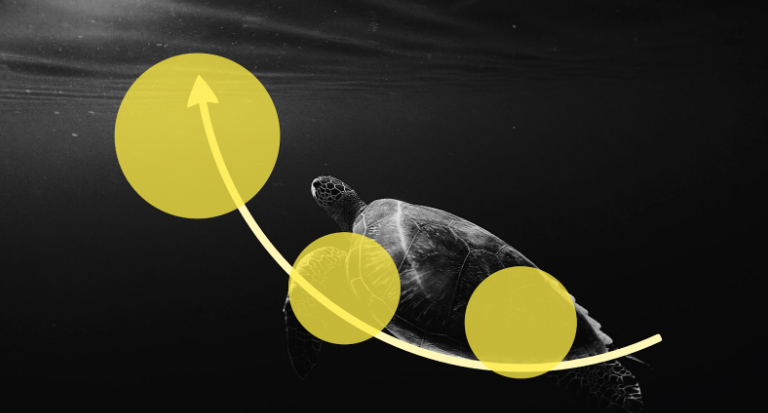
Lastly, our lone paddler is all about choices. She can either go straight, veer to the left, or head to the shore on the right side. If the story you’re presenting is about a crossroads, or the intention is to present content in a different order each time, a structure that leaves your options open to fit the situation at hand is ideal (think a sales pitch or a project proposal).
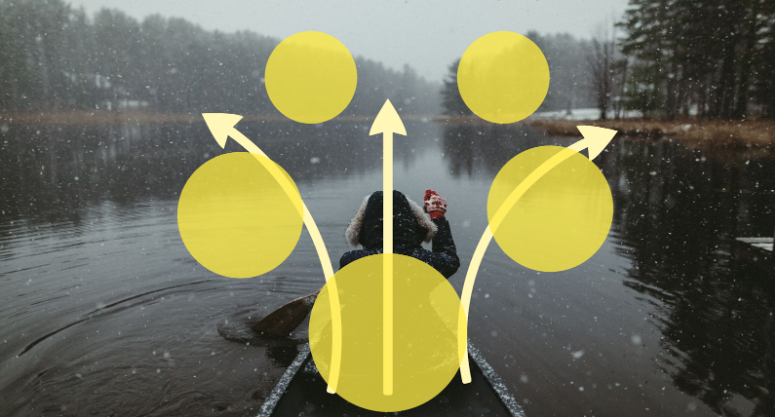
Patterns and textures in presentation backgrounds
Sometimes a background with subjects or a metaphor isn’t the right approach to a presentation. In that case, patterns or textures are great for adding visual oomph to your message without getting too detailed. But not every pattern or texture is made equally. Some can be too distracting, or too bold to support your content. Make sure you’re thinking twice before you make your selection.
Monochrome for good presentation backgrounds
A monochrome background can enhance the colors of your content– no matter what those colors are. The examples below also allow for a strong headline and multiple content flows, since they’re simple and straightforward.
7. Woven wave presentation background
This woven wave is a great option if you want to give direction to your content but don’t want to include a metaphor of any kind. You can also choose from a wide variety of color palettes since just about everything stands out against black and white.

8. Painted wall presentation image
This painted wall gives you options. You can place your content in a line on the top or the bottom half; either would look natural to the eye. The two halves also suggest categories, should you decide to place your content on the top and the bottom.
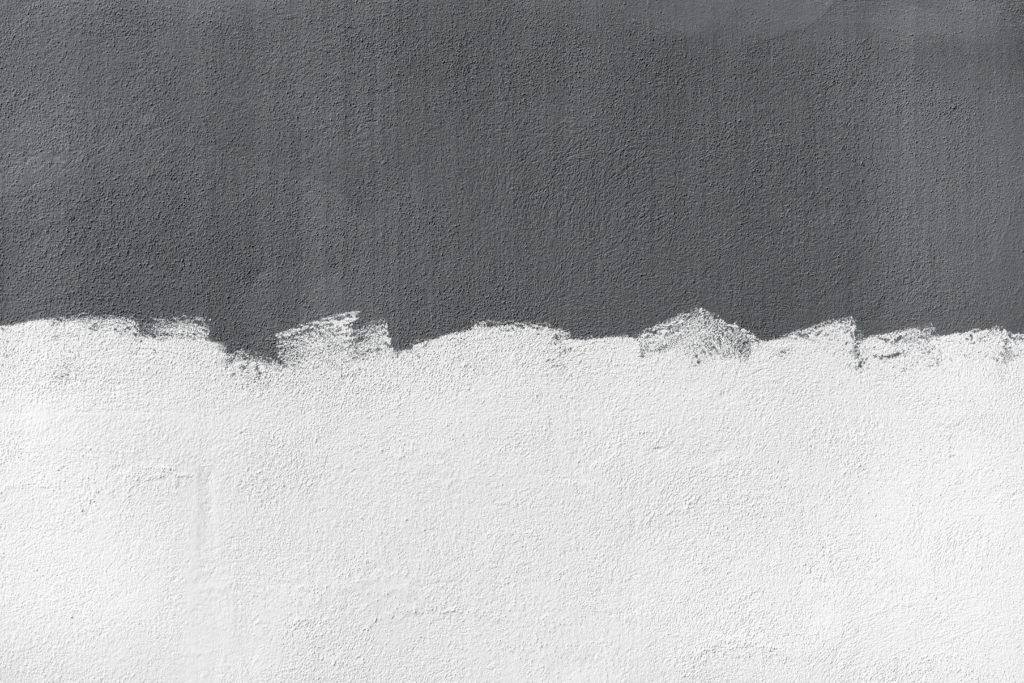
9. Water ripple presentation background
Varying shades of the same blue make this watery monochrome background a great option for those looking to add movement or fluidity to their message in an elegant way.

Architectural makes good backgrounds
Architectural backgrounds in presentations are great for modern content. Their edginess or open-airiness is visually attractive, and they often consist of a flat pattern that can support many different content layouts.
10. Cityscape presentation image
Cityscape images make good presentation backgrounds because they give you the feeling of looking up. Try this background if the message you’re trying to communicate is forward-looking or about the promise of a brighter future.

11. Quilted metal background
This quilted pattern is great for when you want to share the information in your presentation in a non-linear order. Because it’s textured and yet flat, your content can live anywhere and be placed in whichever order you choose without being visually confusing.
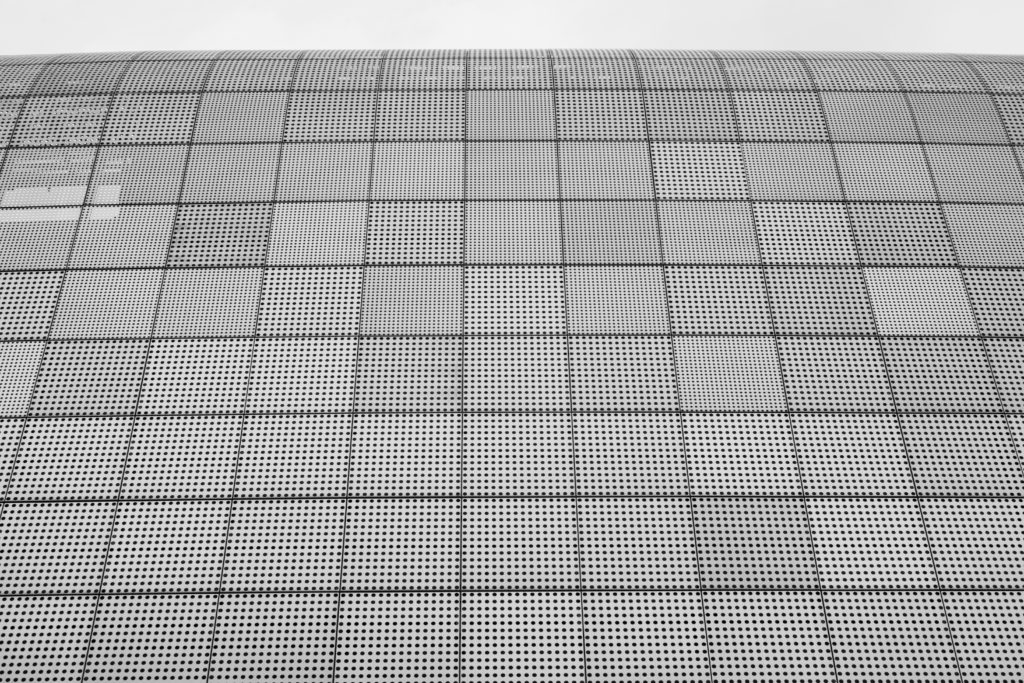
12. High-rise presentation picture
This tall building naturally causes the eye to gravitate to the top of the image. Use this presentation background when you want to direct your audience’s eyes to a single area.
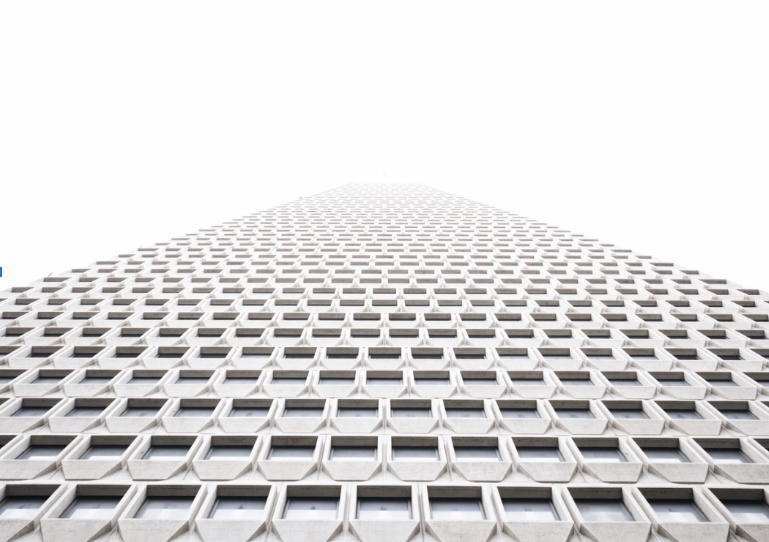
13. Shifted city background image
Everyone likes a good cityscape, but they can sometimes be so mesmerizing that they detract from the content. By using black and white and a trick of the lens, this photograph is perfect for those who want the scenery to make a subtle urban statement.

Bright colors make good presentation backgrounds
Sometimes you want good presentation backgrounds that offer visual appeal without being too visually appealing. Subtle textures like the options below can, while full of color, easily add depth to content and keep context intact when you’re zooming in and out. And, because they’re flat, you can build almost any kind of presentation on top of them.
14. Moody blue background image
We like this moody blue option because it’s simple, calming, and has enough variation in the hue to remain visually interesting. Try this type of background if your message is meant to be soothing.
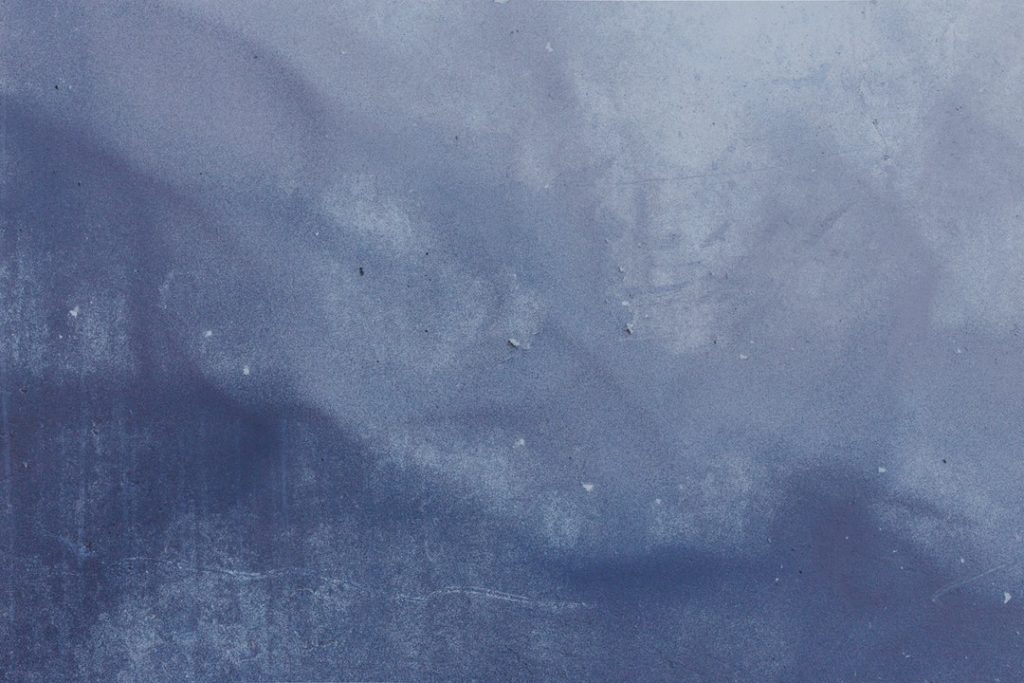
15. Greenscape presentation background
This green option screams action, and much like a player’s handbook, or a score sheet, insinuates planning. Try this background if your presentation is about achieving a goal or strategizing a project. Think QBR, a sales kickoff, or even an all-hands company meeting.

16. Blue wave paint presentation background
If your presentation is about creativity, the blue-painted waves in this presentation could be a great option. There’s enough variety in the palette to make it exciting, but not so much that it would detract from your overall message. Content can also be placed in any order and look natural.

17. Bordered bricks presentation picture
The natural border this painted brick background provides can lend your presentation structure, especially if the content itself is meant to be unsystematic. Take this background for a spin if you’re going to try the conversational presenting method.
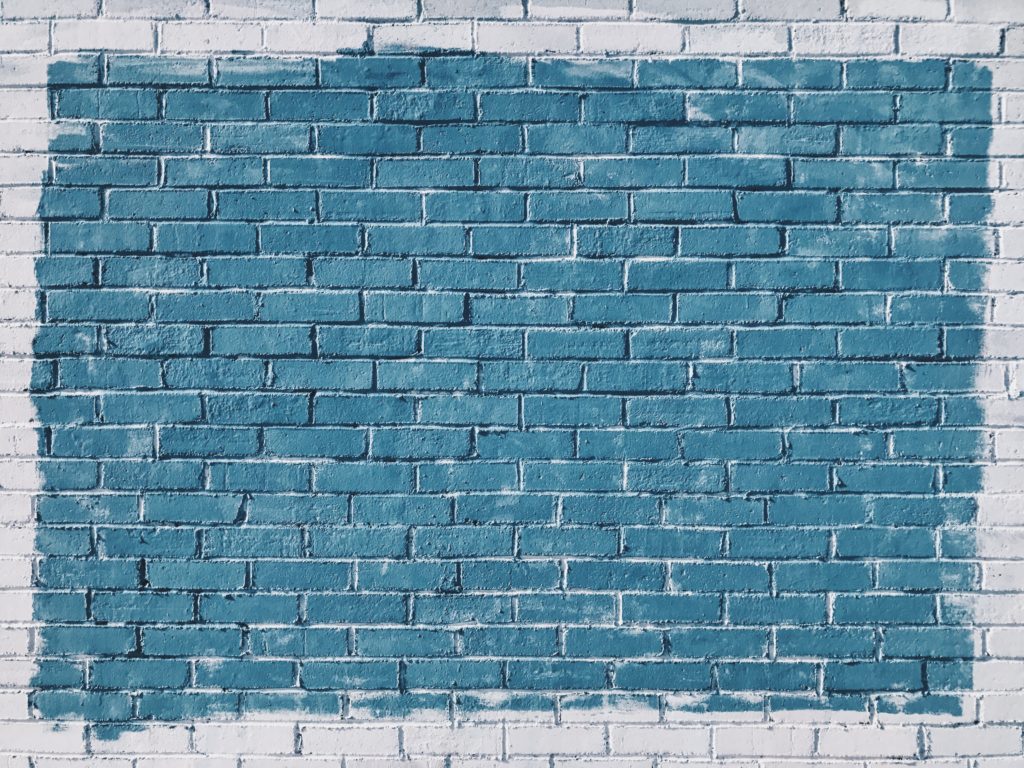
18. Red wave background
This closeup of a structure in Milan, Italy, is striking for obvious reasons. In a presentation background, its bold color palette can easily be used in combination with neutral content (think black and white) to make a chic statement.
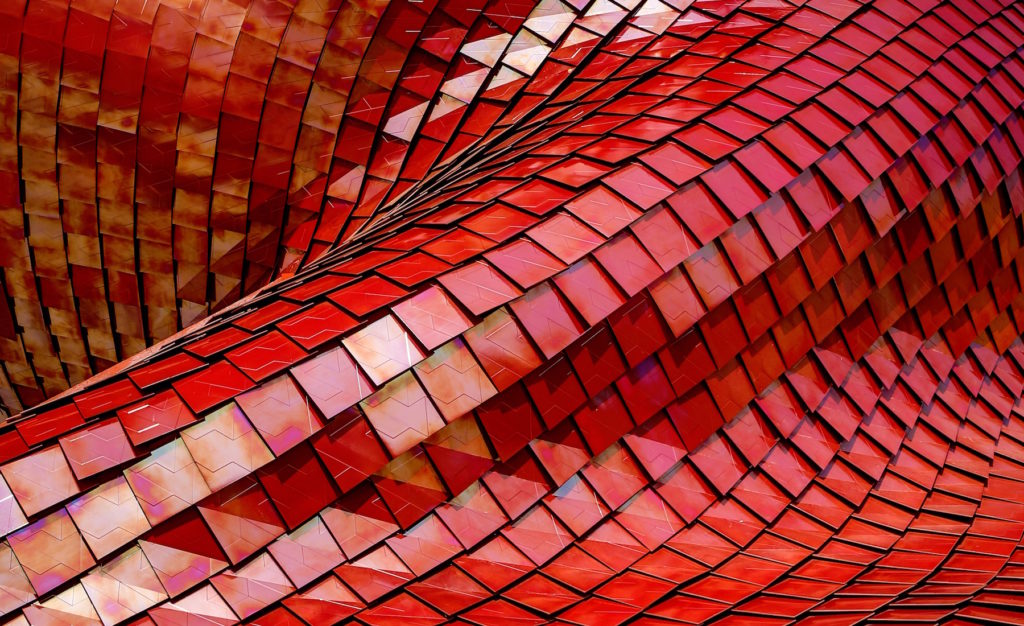
19. Wooden geometry presentation image
The warmth of the wood and the various angles in this photo from Shanghai, China, make it a perfect background for a welcoming message. Try this option if you’re presenting something educational.

20. Blurry confetti presentation background
Blurred backgrounds are great for presentations because they allow the presenter to build content on top of an image that subliminally tells the eye not to focus on it. This blurred confetti background has color, texture, and emotion all wrapped up in one. Try it out if you’re presenting about something cheerful, or really want to get your audience pumped.

Simple presentation backgrounds
Sometimes you don’t need a subject in your background. Sometimes you don’t even need a pattern! In the cases when simple makes the most sense, here are a few recommendations.
21. Dark presentation background image
A dark presentation background is particularly good for stage presentations and bold content. Be sure to use bright text and images for optimal contrast.
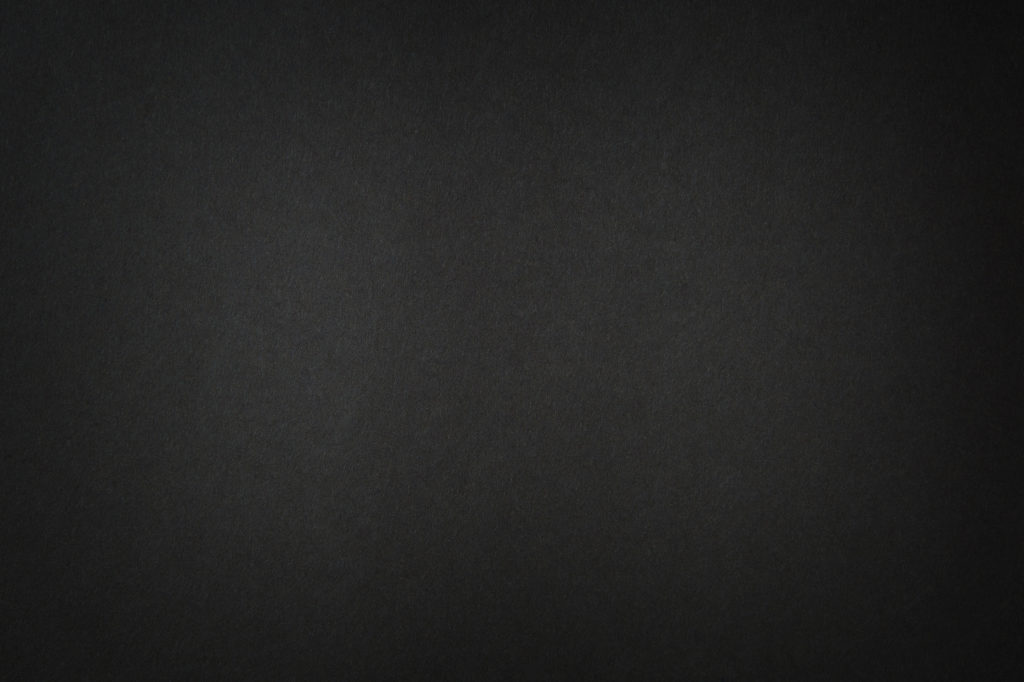
22. Bright presentation backgrounds
When your content has a lot of colors, you can try using a neutral background with lots of texture like this one to give extra depth to your presentation.

23. Light blue background images
Light blues are cool and calming– perfect for low-key presentations. With this background, it’s best to put your text in the brightest areas of the gradient.

24. Deep blue background image
Deeper blues are great for professional topics, especially when you want to convey a serious mood.

25. Soft presentation backgrounds
Soft presentation backgrounds are very flexible because they don’t command attention. If you use one that transitions from one color to the next, like this one, try placing your main points on the top and secondary points on the bottom.

For more ideas and examples, go to our article on simple presentation backgrounds.
How to choose the right presentation background
Selecting the perfect presentation background is a critical step in creating a visually compelling and effective presentation. Here are some practical guidelines to help you make the right choice:
1. Define your presentation’s purpose and audience
Before you start browsing backgrounds for a presentation, take a moment to clarify the purpose of your presentation and understand your audience. Consider questions like:
- What is the main message or theme of your presentation?
- Who is your target audience, and what are their preferences and expectations?
- What emotions or reactions do you want to evoke in your audience?
By having a clear understanding of your presentation’s purpose and your audience’s needs, you’ll be better equipped to choose a background that aligns with your goals.
2. Consider the message you want to convey
Your presentation’s content should drive your background choice. Think about the message you want to convey and how the background can support or enhance that message. Here are a few examples:
If your presentation is about innovation and creativity, a background with vibrant colors or abstract patterns can convey a sense of dynamism.
For a more serious and professional topic, consider using a clean and minimalist background to maintain a professional appearance.
If you’re presenting data or statistics, a background with simple lines or grids can help organize your information effectively.
The following presentation clearly communicates what it’s going to be about with its background image:
3. Balance simplicity and visual appeal
As mentioned earlier, balance is key. Aim for a background that is visually appealing but not overly complex. Too much visual noise can distract your audience from your content. Simplicity can make your message stand out, so choose backgrounds that enhance, rather than overpower, your presentation.
4. Think about color psychology
Colors play a significant role in conveying emotions and messages. Different colors can evoke various feelings and responses from your audience. Consider the following associations when selecting colors for good backgrounds:
- Blue: Trust, professionalism, and calm.
- Red: Energy, passion, and excitement.
- Green: Growth, balance, and harmony.
- Yellow: Optimism, warmth, and positivity.
Choose colors that align with the mood and tone of your presentation. Keep in mind that text and other content on your slides should contrast well with the background color for readability.
The choice of bright yellow ties together with the optimistic and inspiring message of the presentation:
5. Test and iterate
Before finalizing your background choice, create a sample slide with your content to ensure that it looks visually appealing and is easy to read. Test it on various screens and consider how it will appear in different lighting conditions. If something doesn’t work, be willing to iterate and make adjustments until you find the perfect balance.
6. Maintain consistency
Consistency is key to a polished presentation. Once you’ve selected good backgrounds, use them consistently throughout your presentation. This helps maintain a cohesive visual identity and keeps the focus on your content rather than the background.
The colors and elements of the background image stay the same throughout the presentation, providing a coherent viewing experience:
7. Explore Prezi’s options for good backgrounds
If you’re using Prezi for your presentation, take advantage of its background features. Prezi offers a wide range of good backgrounds, including patterns, textures, and images. Use Prezi’s search tool to find good backgrounds that match your criteria, and don’t hesitate to explore different options to find the one that best suits your presentation.
Dos and don’ts of presentation backgrounds
When it comes to good backgrounds, there are certain dos and don’ts to keep in mind to ensure your visuals enhance rather than detract from your message. Here are some key guidelines:
Do:
- Consider the message: Think about the core message of your presentation. Does it require a specific mood, tone, or theme? Select a background that aligns with your message. For example, a serene nature background might be suitable for a presentation on mindfulness, while a dynamic cityscape could work well for a business strategy presentation.
- Balance simplicity: Simplicity can elevate the aesthetics of your presentation, but avoid extremes. Too simple, and it may appear unprofessional; too complex, and it can distract from your content. Strive for a balance that enhances your message without overwhelming your audience.
- Use negative space wisely: Negative space within a background can be a hidden gem. Utilize empty areas to add text, icons, or logos, making your content pop. This technique can help guide your audience’s attention to key points.
- Create a visual hierarchy: Arrange your content on the background strategically. Use the background’s elements, lines, or flow to guide the viewer’s eye to the most important information. Ensure a logical visual hierarchy.
- Test for clarity: Before finalizing your background, test it with sample content to ensure readability. Make sure your text contrasts well with the background color or pattern. Avoid backgrounds that make text hard to read.
Don’t:
- Overcrowd good backgrounds: Resist the temptation to clutter your background with too many elements. It can make your presentation look chaotic and difficult to follow. Keep it clean and organized.
- Distracting patterns: While patterns and textures can add visual appeal, be cautious not to choose backgrounds that are overly distracting. The background should complement, not compete with, your content.
- Inappropriate color schemes: Consider color psychology when selecting background colors. For instance, avoid overly bright or clashing colors that might create visual discomfort. Opt for colors that evoke the desired emotional response from your audience.
- Lack of consistency: Maintain consistency in your background design throughout your presentation. Abruptly changing good backgrounds can disrupt the flow and coherence of your message.
Selecting good backgrounds for your presentations is a nuanced process that requires thoughtful consideration. By following these dos and don’ts, you can ensure your background enhances your content, captures your audience’s attention, and helps convey your message effectively. Remember that a well-chosen background can set the stage for a successful presentation.
Learn more about the best presentation design practices by watching the following video:
How to find your perfect images for good backgrounds in Prezi
Adding a background image is a great way to set the look and feel of your presentation — and it’s super easy to do if you’re a Prezi user. You can select a background by using the “Background” sidebar from within the platform itself. From here, you can also change your background color. All of the images we shared in this post were found through this feature.
Check out the process in the video below.
Adding a couple of keywords to your searches can help source images that are best suited to good backgrounds for your message. Our own designers often add “sparse” or “plain” to their queries in order to pull up options that have plenty of space for topics. You can also search for “texture” or “pattern” if you’d prefer something without a subject at all.
In addition to making background design easy, the search tool within Prezi will also source high-quality images and icons for you to use, so you can design your entire presentation from start to finish without ever leaving the platform.
Easily convert your PowerPoint to a Prezi
If you already have a presentation designed in PowerPoint, we make it easy to take Prezi for a test drive with PowerPoint converter. With Prezi, you can animate your existing set of PowerPoint slides. After importing and selecting which slides you want to keep, simply select your new background, layout, shapes, and colors.
If you’re new to the Prezi-verse, check out some of our favorite presentations on our gallery page. Prezi’s one-of-a-kind open canvas lets you organize and view your presentation as a whole.
Login to start designing your good backgrounds, or sign up for an account to get started.
Choosing the right presentation background may require some thoughtful consideration, but the effort pays off in creating a more engaging and impactful presentation. By aligning your background with your message and audience, you can set the stage for a successful presentation that captures your audience’s attention and effectively conveys your ideas.
